How many temperature sensors can I connect to one bus without losing accuracy.Can I use for example 50 sensors to one bus? Should I change the resistor when I connect too many sensors? Here is the manual http://datasheets.maximintegrated.com/en/ds/DS18B20.pdf
// This Arduino sketch reads DS18B20 "1-Wire" digital
// temperature sensors.
// Copyright (c) 2010 Mark McComb, hacktronics LLC
// License: http://www.opensource.org/licenses/mit-license.php (Go crazy)
// Tutorial:
// http://www.hacktronics.com/Tutorials/arduino-1-wire-tutorial.html
#include <OneWire.h>
#include <DallasTemperature.h>
// Data wire is plugged into pin 3 on the Arduino
#define ONE_WIRE_BUS 3
// Setup a oneWire instance to communicate with any OneWire devices
OneWire oneWire(ONE_WIRE_BUS);
// Pass our oneWire reference to Dallas Temperature.
DallasTemperature sensors(&oneWire);
// Assign the unique addresses of your 1-Wire temp sensors.
// See the tutorial on how to obtain these addresses:
// http://www.hacktronics.com/Tutorials/arduino-1-wire-address-finder.html
DeviceAddress insideThermometer = { 0x28, 0x94, 0xE2, 0xDF, 0x02, 0x00, 0x00, 0xFE };
DeviceAddress outsideThermometer = { 0x28, 0x6B, 0xDF, 0xDF, 0x02, 0x00, 0x00, 0xC0 };
DeviceAddress dogHouseThermometer = { 0x28, 0x59, 0xBE, 0xDF, 0x02, 0x00, 0x00, 0x9F };
void setup(void)
{
// start serial port
Serial.begin(9600);
// Start up the library
sensors.begin();
// set the resolution to 10 bit (good enough?)
sensors.setResolution(insideThermometer, 10);
sensors.setResolution(outsideThermometer, 10);
sensors.setResolution(dogHouseThermometer, 10);
}
void printTemperature(DeviceAddress deviceAddress)
{
float tempC = sensors.getTempC(deviceAddress);
if (tempC == -127.00) {
Serial.print("Error getting temperature");
} else {
Serial.print("C: ");
Serial.print(tempC);
Serial.print(" F: ");
Serial.print(DallasTemperature::toFahrenheit(tempC));
}
}
void loop(void)
{
delay(2000);
Serial.print("Getting temperatures...\n\r");
sensors.requestTemperatures();
Serial.print("Inside temperature is: ");
printTemperature(insideThermometer);
Serial.print("\n\r");
Serial.print("Outside temperature is: ");
printTemperature(outsideThermometer);
Serial.print("\n\r");
Serial.print("Dog House temperature is: ");
printTemperature(dogHouseThermometer);
Serial.print("\n\r\n\r");
}
